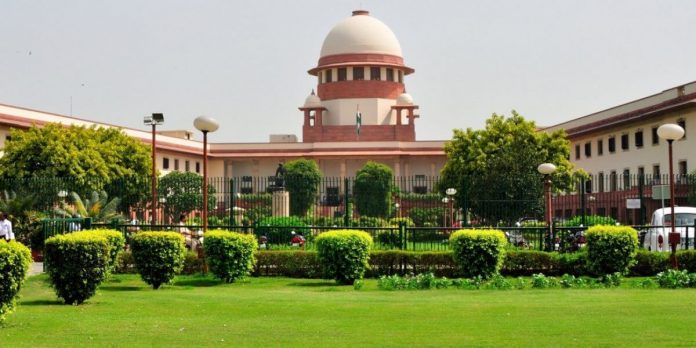This article is written by Sahaja, from NALSAR University of Law, Hyderabad. The article tends to answer the question of whether an Instagram Live video can be regarded as a dying declaration under Section 32(1) of the Indian Evidence Act.
Table of Contents
Introduction
A dying declaration is a testimony that would normally be considered hearsay but may be allowed as evidence in criminal law proceedings under common law because it represents the last words of a dying person. This is based on the maxim nemo moriturus praesumitur mentiri — “no-one on the point of death should be presumed to be lying”. In Indian courts, dying declarations are admissible as evidence if the dying person is aware of his or her danger, has given up hope of recovery, the dying person’s death is the subject of the charge and the dying declaration, and the dying person was capable of a religious sense of accountability to his or her killer.
One of the most important questions raised with respect to dying declarations is whether declarations on social media or on live videos are and can be considered as dying declarations? In a recent incident, a rapper in Los Angeles was broadcasting a live video in his car when he was shot to death. In cases such as these, will the live video watched by many be considered as a dying declaration of evidentiary value?
Section 32(1) of the Evidence Act
Section 32 of the Indian Evidence Act, 1872 deals with situations involving people who are deceased or cannot be found. According to Section 32(1), when a person makes a statement about the cause of his death or any of the circumstances of the transaction that led to his death, and the cause of that person’s death is called into doubt and the dead person cannot be found, or who has become incapable of giving evidence, or whose attendance cannot be procured without an amount of delay or expense which, under the circumstances of the case appears to the court unreasonable the dying declaration is used as evidence.
It was held by the Supreme Court in the case of Ulka Ram v. State of Rajasthan, (2001) that “when a person makes a statement as to the cause of his death or as to any circumstances of the transaction which resulted in his death, in case the cause of his death is in question is admissible in evidence, such statement in law is compendiously called a dying declaration.” The facts of the case are that on the night of May 6/7, 1994, Nonji (PW1) filed a complaint with the in-charge of the police station Bheenmal alleging that while he was at the Chakki of Tararam around 11.30-12.00 a.m., he heard a voice raising the noise saying “Mare Mare” from the side of the appellant’s house. When the informant heard the ruckus, he rushed out of the Chakki and saw Smt. Parveena, the appellant’s wife, ran out of her house in a blaze. She had torn her garments and was sitting naked. After a while, the appellant also emerged from his home. When questioned, Parveena stated that the appellant burned her by sprinkling kerosene oil on her. The police began their inquiry after filing a complaint under Sections 324 and 498A of the Indian Penal Code, 1860. The charge was modified to Section 302 IPC after Parveena, who was admitted to the hospital, died on 8.6.1994 and the appellant’s daughter died on 2.7.1994.
Some of the different forms of dying declaration considered by the courts under Section 32(1) of the Evidence Act are:
- A deathbed pronouncement cannot be thrown out only because it is not recorded in question-and-answer format. A statement recorded in the narrative may be more natural because it provides the victim’s account of the incident.
- Signs, gestures, and nods, whether simple or complicated, can be considered as a dying declaration as far as it serves the purpose of evidence.
- The declaration made in any language will be considered a valid declaration. If made in a regional language, this particular piece of information cannot be discarded.
- When the declaration or statement is made by a person who is mentally unsound or unaware of surrounding situations the statement is not given weight by the court.
Dying declaration as an evidence
The dying declaration is undeniably admissible under Section 32, and because it is not made under oath, its truth cannot be verified through cross-examination, the court must scrutinise and circumspect the statement before acting on it. The court must be convinced that the death was in a sound state of mind to give the statement after having a clear opportunity to watch and identify his assailants and that he was speaking freely and without fear of retaliation. If the court is satisfied that the dying declaration is true and voluntary, the conviction can be established without more evidence.
It was held in Sant Gopal vs. State of U.P. (1995) that evidence of a dying declaration is admissible not only against the person who caused death but also against those people who were involved in the death.
The Supreme Court laid down principles with respect to a dying declaration in the case of Kushal Rao v. State of Bombay,(1975). These principles are:
- That it is impossible to establish as an absolute rule of law that a dying declaration cannot be used as the only basis for guilt unless it is backed up by evidence
- That each case must be decided on its own facts, taking into account the circumstances surrounding the deathbed pronouncement
- That it is impossible to state categorically that a dying pronouncement is a weaker type of proof than other types of evidence
- That a dying declaration is treated the same as any other piece of evidence and must be considered in light of the circumstances and in accordance with the principles guiding evidence weighting
- That in order to determine the reliability of a deathbed declaration, the court must consider factors such as the dying man’s opportunity for observation
- That a dying declaration recorded in a proper manner by a competent magistrate, that is, in the form of questions and answers, and, as far as practicable, in the words of the maker of the declaration, stands on a much higher footing than a dying declaration based on oral testimony, which may be subject to all the flaws of human memory and character.
Dying declarations play a huge role and carry the most significance when it comes to deciding a rape case. For example in the Nirbhaya case, the dying declaration made by the victim played an important role in convicting the accused. In this case, while travelling with a friend on a bus, a girl was violently raped by six people. Her intestines had been torn from her body. They were both dumped on the side of the road and left to die. They were taken to the hospital for treatment. She issued a dying declaration in which she called for justice and named her assailants before succumbing.
Exceptions
Certain kinds or forms of a statement cannot be considered as a dying declaration some of these are:
- If the deceased’s cause of death is not in dispute: If the deceased made a remark before his death about anything other than the cause of his death, that statement is not admissible in evidence.
- The declarer must be a competent witness. A remark made by a minor or a person of unsound mind cannot be considered as a valid dying declaration
- An incomplete and inconsistent dying declaration cannot be considered as a piece of evidence.
- It is irrelevant if the deceased’s comment is not about his death but about the death of another.
Social media and dying declaration
One important question that creeps up into everyone’s mind in the digital age is whether dying declarations made on social media, either written text or audiovisual recordings can be considered as dying declarations under the Indian Evidence Act. In a recent case, a 38-year-old man in Uttar Pradesh’s Jhansi district posted his dying declaration on a social media site and ended his life by consuming poison. He stated that his father-in-law, mother-in-law, and sister-in-law had been harassing him for a long time, causing him to become depressed and eventually commit suicide. This video posted by him was indeed used and considered to interrogate the family members and to investigate more about the suicide.
In the very famous case of the suicide of Sunanda Pushkar, the messages sent by her via social media and the mails were used as dying declarations by the Delhi High Court. In this case, the autopsy report of Pushkar revealed that the death was due to an unnatural cause. Shashi Tharoor who had found her body was suspected to be involved in the death of his wife, Pushkar. Following this, a charge sheet was filed against him by the Delhi police. And he was charged with abetment to suicide of his wife and marital cruelty under Sections 306 and 498A of the Indian Penal Code.
Instagram live video
When someone watches a video on the Internet, they employ streaming as a form of data delivery. It’s a method of delivering video content in little chunks, usually from a remote storage site. Client devices don’t have to download the complete video before starting to play it because only a few seconds of it is sent over the internet at a time. The term “live streaming” refers to video that is delivered over the Internet in real-time rather than being captured and saved first. Live-streaming is now possible for TV broadcasts, video game streams, and social networking content.
Instagram live allows users to broadcast live videos to their followers as part of Instagram stories. Going live requires only a few steps from the Instagram stories camera, and once the user is finished broadcasting, the video will vanish (unless saved or posted on the Instagram page) as soon as the stream ends, perhaps encouraging more Instagrammers to join and feel more comfortable uploading live material.
Can a live video be considered as a dying declaration
A dying declaration can be recorded by anyone. But such a recording of a dying declaration will be more credible and be given more weightage if it has been recorded by a magistrate. The Delhi High Court held in State v. Ram Singh (2013) that a clear and confirmed deathbed declaration cannot be disregarded just because it was recorded by a police officer. Going by this precedent, an Instagram live video that is screen recorded by a viewer or downloaded by the owner can be regarded as a dying declaration under Section 32(1).
According to a crime branch department of the Odisha Police, video and audio recordings can be used as a dying declaration. Certain principles that used case laws as precedents were also laid down in the circular to prove the credibility of such audiovisual recordings.
The court admitting the live video as a piece of evidence must be sure to cross-examine and check the truthfulness and the credibility of the statement made in the video. The court should also make sure that the statement made is regarding the dying person and not someone else in order to consider it as a legitimate dying declaration.
In Emperor vs. Abdulla (1885) it was held that the conduct to be relevant as dying declaration, must be related to
- The cause of death;
- Circumstances of the transaction; and
- And death must have been a result.
Therefore, while dealing with a live-streamed video, the court needs to take into account the above conditions as well.
An Instagram live video can be discarded as not admissible as a piece of evidence under Section 32(1) of the Indian Evidence Act if the dying declaration by an incompetent person (minor or mentally unsound) is mentioned in this article previously. The M.P. High Court held in Amar Singh v. State of Madhya Pradesh (1996), that the dying declaration was not reliable without proof of mental or physical competence.
Any kind of gesture or sign made in a live video that prompts and directs to the cause of the person’s death can be considered as a dying declaration. But such a gesture if made under the influence of someone else, prompting, imagination or tutoring cannot be a strong reliable declaration. Thus, the video needs to be scrutinized and cross-examined around the facts and circumstances.
A statement or declaration made, must be directly and proximately related to the death for it to be considered as a dying declaration. The same rule applies in the case of Instagram live videos that are recorded, stored, or downloaded.
The Madras High Court’s Madurai bench has urged in the case that technology be used to assist courts in recording dying declarations, noting that audio clippings and videos should be used in addition to the current practice of having a doctor and a magistrate present when such declarations are recorded. The court emphasised that under Section 32 of the Evidence Act, even a common man can video and audiotape an incident, and such pieces of evidence are admissible in court and urged trial courts to collect such evidence wherever possible.
According to the Supreme Court, in the case of Naresh Kumar v. Kalawati & Others, (2021) it was observed there can be “no hard criteria or yardstick” for accepting or rejecting a deathbed pronouncement, which might serve as the sole ground for conviction if it is made voluntarily and inspires faith. The Supreme Court stated that if there are contradictions in the dying declaration that raise issues about its honesty and trustworthiness, the accused must be given the benefit of the doubt.
Conclusion
The dying statement is a significant piece of evidence since it contains the final words of the person dying associated with the causes of death of such person or the situation leading to such person’s death. Every effort should be made to keep it free of any impurities. A dying declaration is admissible in court because it is assumed that no one who is about to enter the presence of his maker will do so by lying. However, the individual making the proclamation must be certain of his or her impending death. The dying declaration will not be considered if he believes he’ll die tomorrow.
A dying proclamation is admissible just because it was uttered in the heat of battle. In India, Section 32(1) of the Indian Evidence Act explains its admissibility.
As mentioned in this Article and held by the Courts in the above-mentioned cases, it is evident that there is no pigeonholed category of what is admissible as a dying declaration. The declaration only needs to meet certain requirements and must satisfy the court that it can be considered as a piece of admissible evidence against the case. Therefore, an Instagram live video can be regarded as a dying declaration under Section 32(1) of the Indian Evidence Act.
References
- http://www.legalservicesindia.com/article/1682/Dying-Declaration-Section-32(1)-of-Indian-Evidence-Act.html
- https://timesofindia.indiatimes.com/city/madurai/record-audio-video-of-dying-declarations-hc/articleshow/67908495.cms
- http://www.legalserviceindia.com/legal/article-488-dying-declaration.html
- https://www.thehindu.com/news/national/no-rigid-standard-for-acceptance-or-rejection-of-dying-declaration-says-supreme-court/article34176669.ece
LawSikho has created a telegram group for exchanging legal knowledge, referrals, and various opportunities. You can click on this link and join:













